Charles M. Kozierok The TCP-IP Guide
Подождите немного. Документ загружается.


The TCP/IP Guide - Version 3.0 (Contents) ` 351 _ © 2001-2005 Charles M. Kozierok. All Rights Reserved.
Note: There are some other predefined groups that also refer to routers using
particular routing protocols; I didn't bother listing them all as the table would get
quite large.
Delivery of IP multicast traffic is more complex than unicast traffic due to the existence of
multiple recipients. Instead of the normal resolution method through the ARP protocol used
for unicast datagrams, a special mapping is performed between the IP multicast group and
a hardware multicast group.
Problems With "Classful" IP Addressing
The “classful” addressing system was the first major attempt to define a method for
universal addressing of a large IP internetwork. The system had some advantages, as I
mentioned in the overview of the “classful” scheme, and given that it was developed
decades ago for a network that was limited in size, it did the job remarkably well for a long
time.
Nobody ever expected the Internet to mushroom to anything close to its current size. As it
grew, problems become apparent with the “classful” IP addressing mechanism—slowly at
first, but then more rapidly as growth became more rapid. I've hinted at some of theses
problems in my explanation of how this type of addressing works, but to help frame the
discussion of newer addressing types, I think it is useful to look at this in more detail.
Summary of “Classful” Addressing Issues
There are three main problems with “classful” addressing, which are somewhat related to
each other (making them a bit harder to explain). Let's start with a quick summary of what
these issues are:
1. Lack of Internal Address Flexibility: Big organizations are assigned large,
“monolithic” blocks of addresses that don't match well the structure of their underlying
internal networks.
2. Inefficient Use of Address Space: The existence of only three block sizes (classes
A, B and C) leads to waste of limited IP address space.
3. Proliferation of Router Table Entries: As the Internet grows, more and more entries
are required for routers to handle the routing of IP datagrams, which causes perfor-
mance problems for routers. Attempting to reduce inefficient address space allocation
leads to even more router table entries.
224.0.0.11 Mobile agents (for Mobile IP)
224.0.0.12 DHCP Server / Relay Agent
Table 50: Well-Known IP Multicast Addresses (Page 2 of 2)
Range Start
Address
Description

The TCP/IP Guide - Version 3.0 (Contents) ` 352 _ © 2001-2005 Charles M. Kozierok. All Rights Reserved.
Addressing Inflexibility
Issue #1 results primarily from the fact that in the “classful” system, big companies get
assigned a rather large (Class B) or truly enormous (Class A) block of addresses, all of
which is considered by the Internet routers a single “network” with one “network ID”. Now,
imagine that you are running a medium-to-large-sized company with 5,000 computers, and
you are assigned a Class B address for your network. Do you really have 5,000 computers
all hooked into a single network? I sure as heck hope you don't! Yet you would be forced to
try to fit all of these into a single IP “network” in the original “classful” method. There was no
way to create an internal hierarchy of addresses.
The Key Problem with Classes: Low Granularity
Issues #2 and #3 are more closely related to each other than issue #1 and are both the
result of the fact that the “granularity” in the “classful” system is simply too low to be
practical in a large internet. By this I mean that there are too few choices in the sizes of
networks available. Three sizes seems fine in principle, but the gaps between the sizes are
enormous, and the sizes don't match up all that well with the distribution of organizations in
the real world. Consider the difference in size between Class C and Class B networks—a
jump from 254 hosts all the way up to over 65,000! There are many, many companies that
need more than 254 IP address but a lot fewer than 65,000. And what about Class A? How
many companies need 16 million IP addresses, even the truly large ones? Probably none, if
you think about it, yet that's half the IP address space right there.
Considering our company with 5,000 computers again—what class network should they
use? As Figure 64 shows, there is no good match for this company’s needs in the “classful”
scheme at all. In the past, they would likely have been assigned a Class B network.
However, giving a Class B to a company with “only” 5,000 computers means over 90% of
the IP addresses are wasted. When the Internet was young this wasn't a big deal, but as it
grew these inefficiencies quickly started to become significant.
The alternative to wasting all these IP addresses would be to give the company instead of
one Class B, a bunch of Class C addresses. However as you can see, they would need 20
of them. This is more efficient in use of address space, but leads to Issue #3: every router
on the Internet replaces the single Class B router table entry with 20 Class C router entries.
Now multiply this by a few thousand “medium-sized” companies and you can see that this
method would add dramatically to the size of router tables. Router tables have already been
growing quickly as the Internet has expanded. The larger these tables, the more time it
takes for routers to make routing decisions.
Tactics for Dealing with “Classful” Addressing Difficulties
These issues were addressed through three enhancements or improvements that I discuss
in other sections. The first, which primarily addresses Issue #1, was the development of
subnetting. The second was the move to classless addressing and routing, which replaces
the “classful” system with a new method with higher granularity. This tackles Issues #2 and
#3 by letting addresses be assigned based on real organizational needs without requiring
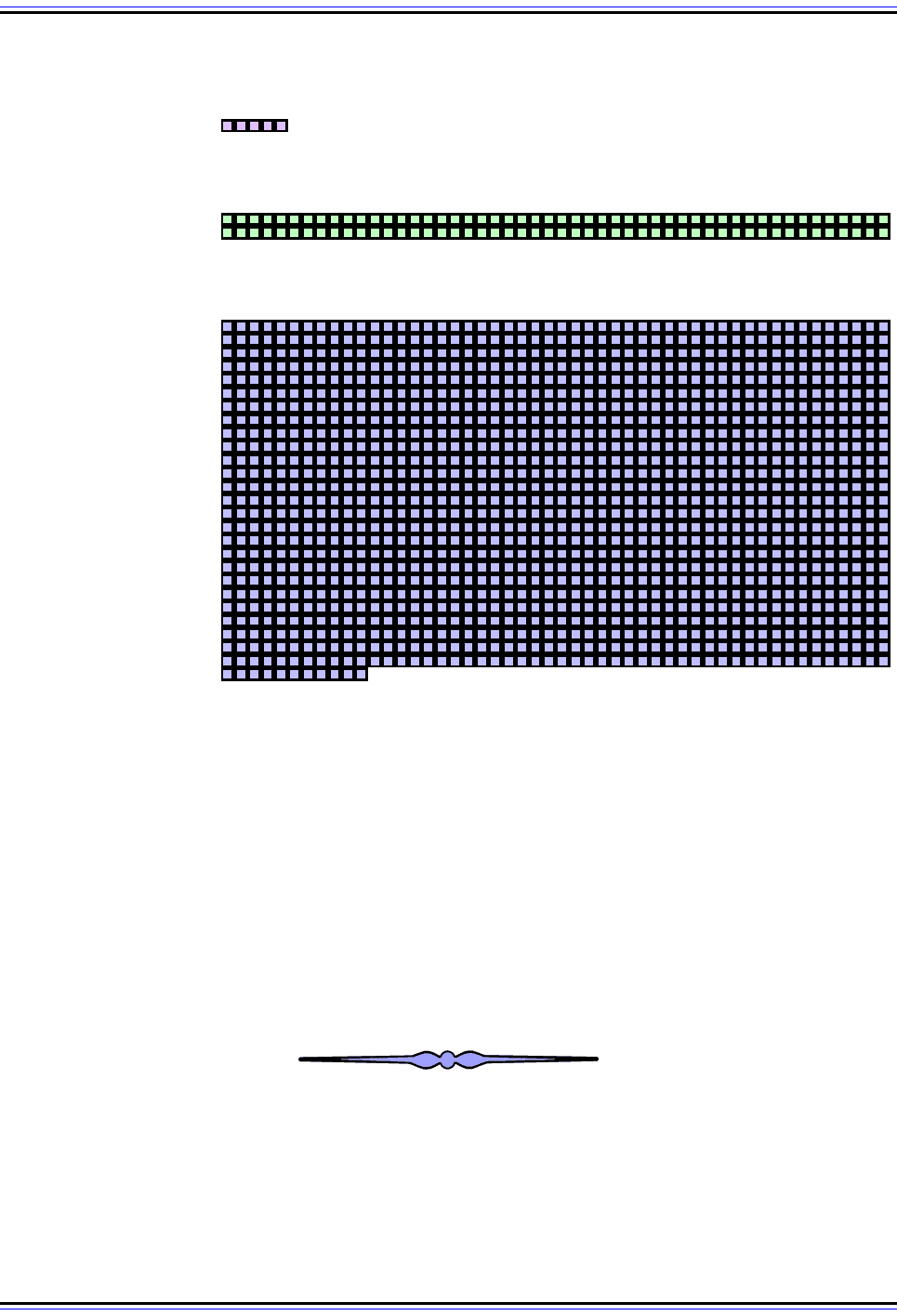
The TCP/IP Guide - Version 3.0 (Contents) ` 353 _ © 2001-2005 Charles M. Kozierok. All Rights Reserved.
numerous routing table entries for each organization. The third improvement is the new IP
version 6 protocol, which finally does away with the cramped 32-bit IP address space in
favor of a gargantuan 128-bit one.
Other support technologies have also helped extend the life of IP version 4. I discussed one
important one in the previous topic—the use of private addressing in conjunction with IP
Network Address Translation (NAT) to allow multiple devices to share public addresses.
This alone has added years to the life of the IPv4 addressing system.
Figure 64: The Main Problem With “Classful” Addressing
In this scale diagram, each square represents 50 available addresses. Since a Class C address has only 254
addresses, and a Class B contains 65,534 addresses, an organization with 5,000 hosts is “caught in the
middle”. It can only choose to either waste 90% of a Class B address or use 20 different Class C networks.
Hosts in Class C
Network (254)
Hosts Needed
By Organization
(5,000)
Hosts in Class B
Network (65,534)
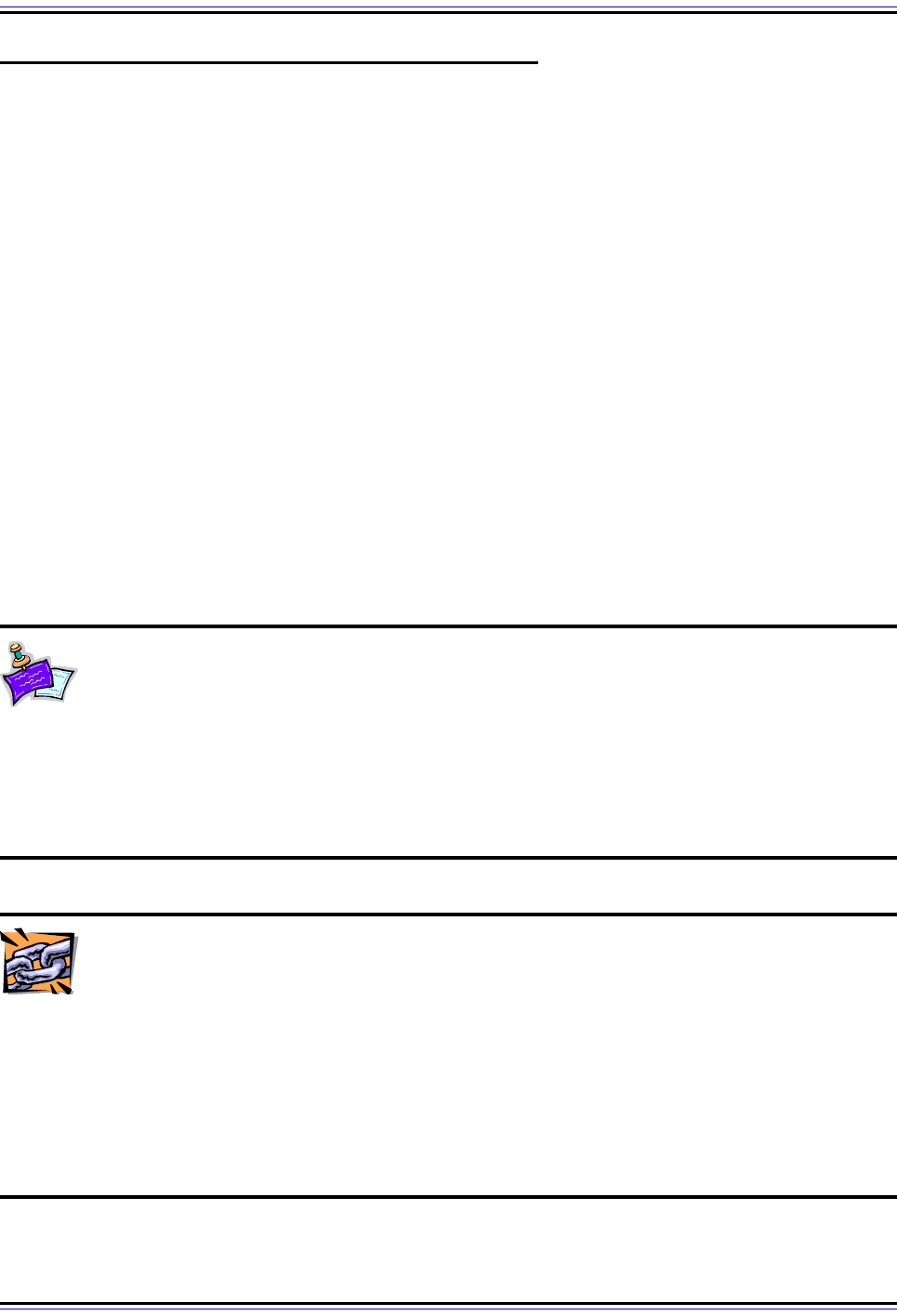
The TCP/IP Guide - Version 3.0 (Contents) ` 354 _ © 2001-2005 Charles M. Kozierok. All Rights Reserved.
IP Subnet Addressing ("Subnetting") Concepts
The original “classful” IP addressing scheme conceptually divides a large internetwork into
a simple two-level hierarchy: many networks of different sizes, each of which contains a
number of hosts. The system works well for smaller organizations that may connect all their
machines in a single network. However, it lacks flexibility for large organizations that often
have many subnetworks, or subnets. To better meet the administrative and technical
requirements of larger organizations, the “classful” IP addressing system was enhanced
through a technique known as subnet addressing, or more simply, subnetting.
In this section I describe the concepts and general techniques associated with IP subnet
addressing. I begin with an overview of subnetting, including a discussion of the motivation
for the system and its advantages. I discuss how the traditional “two-level” method for
dividing IP addresses becomes “three-level” for subnetting. I talk about subnet masks and
how they are used in calculations for addressing and routing. I discuss the default subnet
masks used to represent the “classful” Class A, B and C networks in a subnetting
environment, and then how custom subnet masks are used for classes A, B and C. I then
discuss subnet identifiers and general concepts behind determining subnet and host
addresses in a subnet environment. I provide summary tables for subnetting Class A, B and
C networks. I conclude with a brief discussion of Variable Length Subnet Masking (VLSM),
an enhancement of “conventional” subnetting that improves its flexibility further.
Note: I provide a great deal of coverage of subnetting, because understanding it is
an important part of learning about how IP addresses work, and hence, how TCP/
IP functions. However, I need to emphasize something that far too few references
mention: the technique is today considered mostly historical. The reason is that subnetting
is still based on “classful” addressing, which has been replaced by classless addressing on
the Internet. The concept of a subnet and subnet mask has certainly not disappeared
altogether, but the idea of being assigned a Class A, B or C Internet address block and then
explicitly subnetting it is no longer relevant.
Related Information: This is the first of two sections dedicated to IP address
subnetting. The second section follows this one and describes the step-by-step
process for subnetting using examples. If you find that after reading this concepts
section that you don't quite understand subnetting, try reading the example-based section
and you may find that it helps make it all “click”. On the other hand, if you are already
somewhat familiar with subnetting, you may find that you can skip this concepts section and
just go through the step-by-step examples. You will find much more in that section in the
way of “gory details” of subnet mask, subnet address and host address calculations. Putting
the practical details there allows this section to concentrate on concepts without getting too
bogged down in numbers.
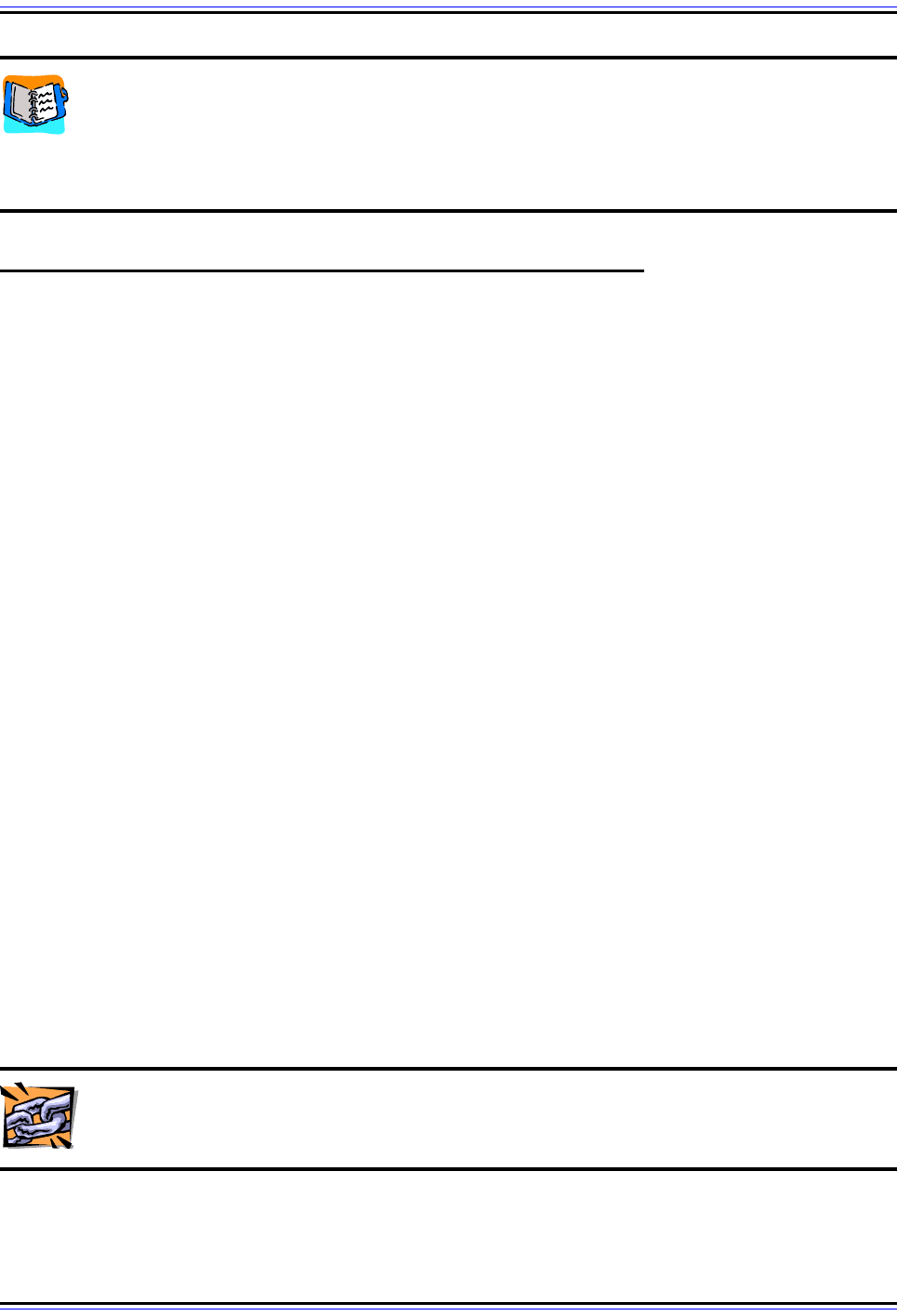
The TCP/IP Guide - Version 3.0 (Contents) ` 355 _ © 2001-2005 Charles M. Kozierok. All Rights Reserved.
Background Information: Understanding subnetting requires a certain familiarity
with binary numbers and how they are manipulated. This includes the concept of
using boolean operators such as AND to “mask” binary digits. If reading that last
sentence made you go “huh?” I strongly recommend reviewing the background section on
computing mathematics before you proceed.
IP Subnet Addressing Overview, Motivation, and Advantages
IP addressing was originally designed around the assumption of a strict two-level hierarchy
for internetworks. The first level was the network, and the second level the host. Each
organization was usually represented by a single network identifier that indicated a Class A,
B or C block dedicated to them. Within that network they had to put all of the devices they
wanted to connect to the public IP network.
The Motivation for Subnet Addressing
It did not take long after the “classful” scheme was developed for serious inadequacies in it
to be noticed, especially by larger organizations. The reason is that while dividing a large
internetwork into networks that contain hosts is conceptually simple, it doesn't always
match well the structure of each of the networks that comprises the internet. A big company
with thousands of computers doesn't structure them as one big whomping physical network.
Trying to assign and administer IP addresses to an organization's entire network without
any form of internal logical structure is very difficult.
Unfortunately, under the original “classful” addressing scheme, there was no good solution
to this problem. The most commonly-chosen alternative at the time was to trade a single
large block of addresses such as a Class B for a bunch of Class Cs. However, this caused
additional problems:
☯ It contributed to the explosion in size of IP routing tables.
☯ Every time more address space was needed, the administrator would have to apply for
a new block of addresses.
☯ Any changes to the internal structure of a company's network would potentially affect
devices and sites outside the organization.
☯ Keeping track of all those different Class C networks would be a bit of a headache in
its own right.
Related Information: I fully explain the problems with “classful” addressing within
the section on “classful” addressing.

The TCP/IP Guide - Version 3.0 (Contents) ` 356 _ © 2001-2005 Charles M. Kozierok. All Rights Reserved.
The Development of Subnet Addressing
In order to address this problem adequately, an enhancement was required to the “classful”
addressing scheme. This change was outlined in RFC 950, which defined a new
addressing procedure called subnet addressing or subnetting. (This RFC was published
way back in 1985, which surprises some people!)
The basic idea behind subnet addressing is to add an additional hierarchical level in the
way IP addresses are interpreted. The concept of a network remains unchanged, but
instead of having just “hosts” within a network, a new two-level hierarchy is created:
subnets and hosts. Each subnet is a subnetwork, and functions much the way a full network
does in conventional classful addressing. A three-level hierarchy is thus created: networks,
which contain subnets, each of which then has a number of hosts.
Thus, instead of an organization having to lump all of its hosts under that network in an
unstructured manner, it can organize hosts into subnets that reflect the way internal
networks are structured. These subnets fit within the network identifier assigned to the
organization, just as all the “unorganized” hosts used to.
Advantages of Subnet Addressing
In essence, subnet addressing allows each organization to have its own “internet within the
Internet”. Just as the real Internet looks only at networks and hosts, a two-level hierarchy,
each organization can now also have subnets and hosts within their network. This change
provides numerous advantages over the old system:
☯ Better Match to Physical Network Structure: Hosts can be grouped into subnets
that reflect the way they are actually structured in the organization's physical network.
☯ Flexibility: The number of subnets and number of hosts per subnet can be
customized for each organization. Each can decide on its own subnet structure and
change it as required.
☯ Invisibility To Public Internet: Subnetting was implemented so that the internal
division of a network into subnets is visible only within the organization; to the rest of
the Internet the organization is still just one big, flat, “network”. This also means that
any changes made to the internal structure are not visible outside the organization.
☯ No Need To Request New IP Addresses: Organizations don't have to constantly
requisition more IP addresses, as they would in the workaround of using multiple small
Class C blocks.
☯ No Routing Table Entry Proliferation: Since the subnet structure exists only within
the organization, routers outside that organization know nothing about it. The organi-
zation still maintains a single (or perhaps a few) routing table entries for all of its
devices. Only routers inside the organization need to worry about routing between
subnets.
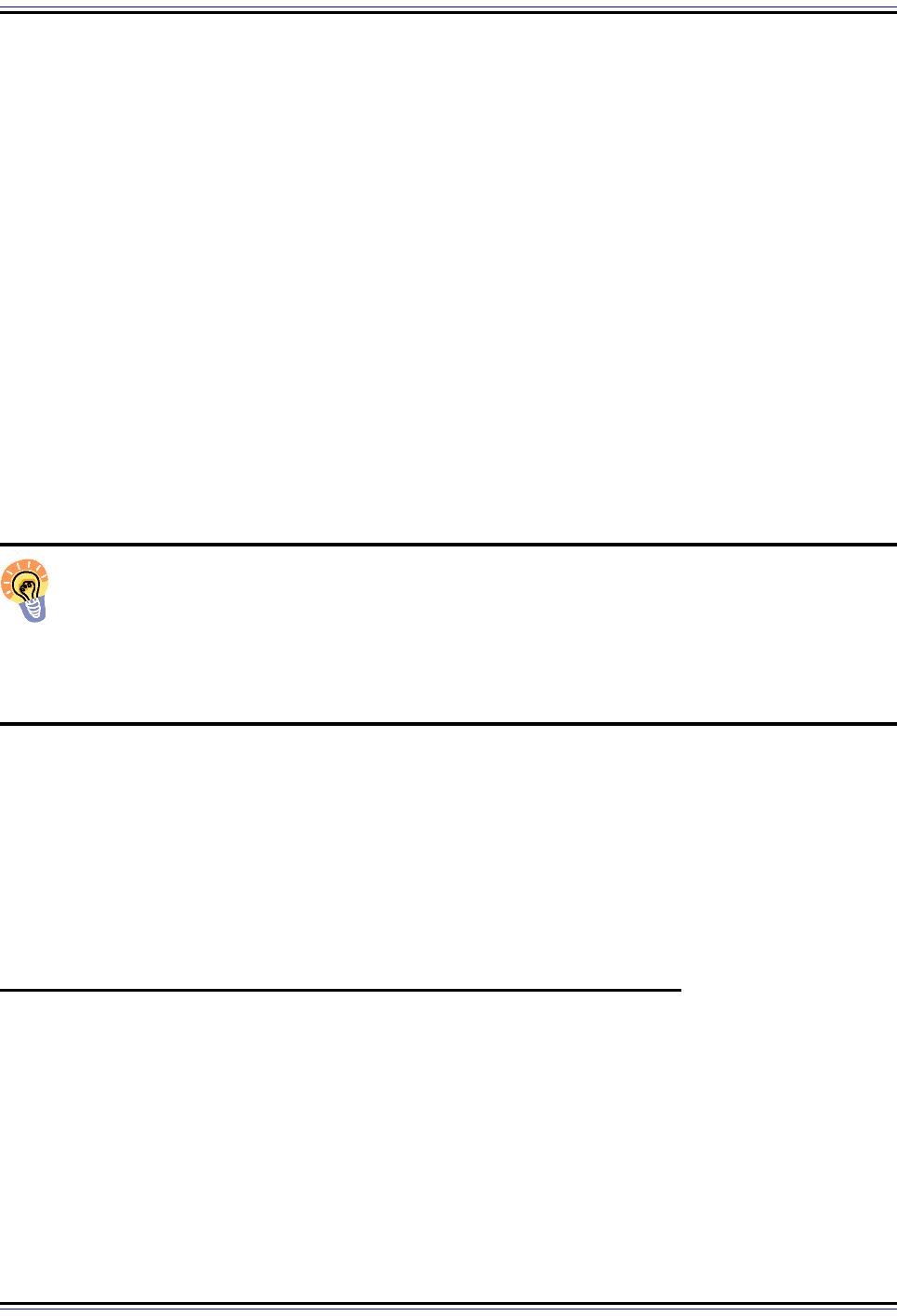
The TCP/IP Guide - Version 3.0 (Contents) ` 357 _ © 2001-2005 Charles M. Kozierok. All Rights Reserved.
The Impact of Subnetting on Addressing and Routing
The change to subnetting affects both addressing and routing in IP networks. Addressing
changes of course, because instead of having just a network ID and host ID, we now also
have a subnet ID to be concerned with. The size of the subnet ID can vary for each
network, so an additional piece of information is needed to supplement the IP address to
indicate what part of the address is the subnet ID and what part is the host ID. This is a 32-
bit number commonly called a subnet mask. The mask is used both for calculating subnet
and host addresses, and by routers for determining how to move IP datagrams around a
subnetted network.
Routing changes because of the additional level of hierarchy. In regular “classful”
addressing, when a router receives an IP datagram, it only needs to decide if the desti-
nation is on the same network or a different network. Under subnetting, it must also look at
the subnet ID of the destination and make one of three choices: same subnet, different
subnet on the same network, or different network. Again, this is done using the subnet
mask. Changes are also required to routing protocols, such as the Routing Information
Protocol (RIP), to deal with subnets and subnet masks.
Key Concept: Subnet addressing adds an additional hierarchical level to how IP
addresses are interpreted, by dividing an organization’s IP network into subnets.
This allows each organization to structure its address space to match its internal
physical networks, rather than being forced to treat them a flat block. This solves a number
of problems with the original “classful” addressing scheme, but requires changes to how
addressing and routing work, as well as modifications to several TCP/IP protocols.
It’s funny, but the main drawbacks to subnetting, compared with the older addressing
scheme, have more to do with understanding how subnetting works than the technology
itself! More effort is required to deal with addressing and routing in a subnet environment,
and administrators must learn how to subdivide their network into subnets and properly
assign addresses. This can be a bit confusing to someone who is new to subnetting.
However, the technology today is quite well-established so even this is not much of a
problem. For the newcomer, having a handy reference guide like this one certainly helps. ☺
IP Subnetting: "Three-Level" Hierarchical IP Subnet Addressing
The simplest division of IP addresses is into a structure containing two elements: the
network ID and the host ID. In explaining this concept, I drew an analogy to the way North
American phone numbers are ten digits long, but are broken down into a three-number area
code and a seven-digit local number.
As I mentioned in the preceding topic, subnetting adds an additional level to the hierarchy of
structures used in IP addressing. To support this, IP addresses must be broken into three
elements instead of two. This is done by leaving the network ID alone and dividing the host
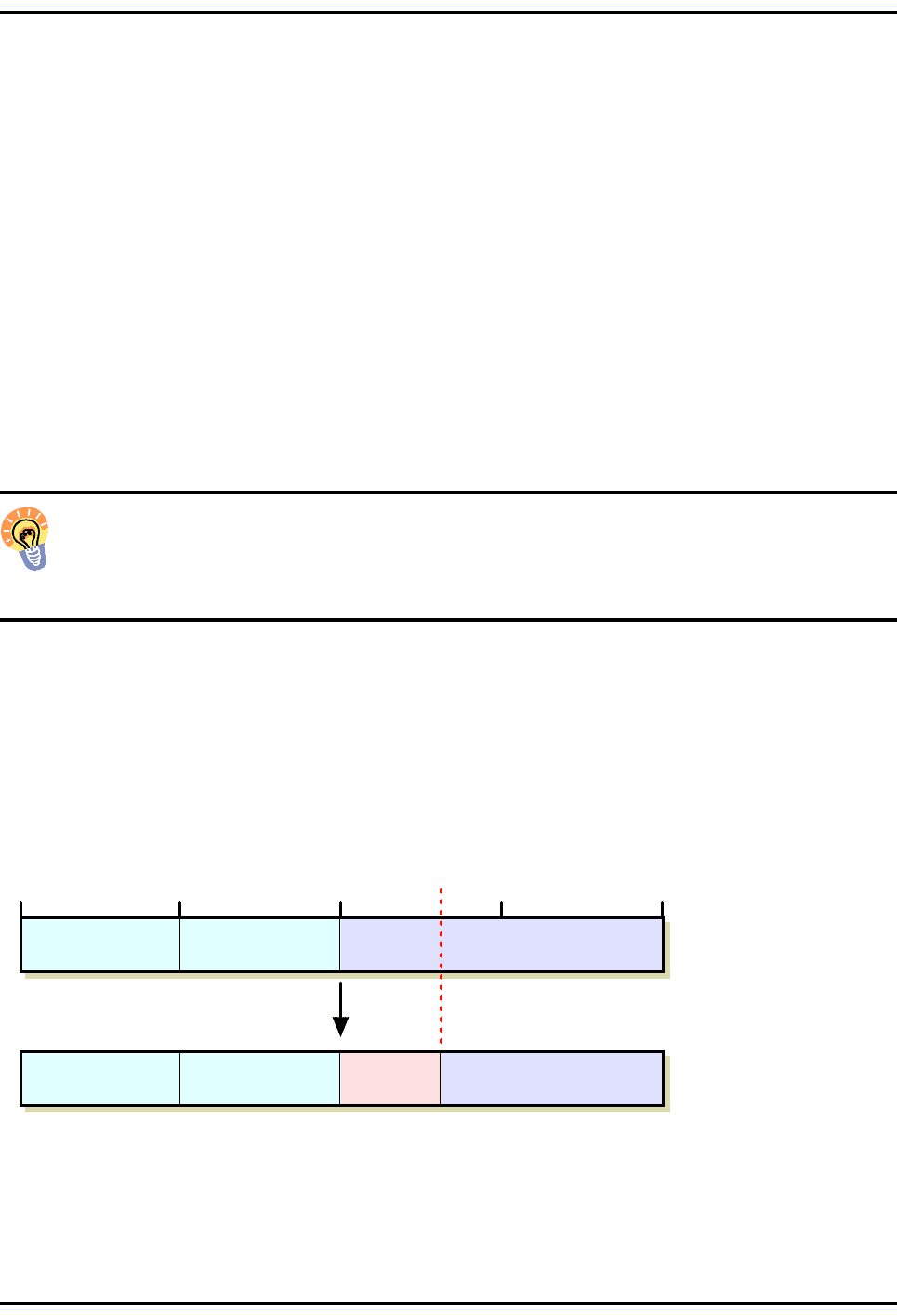
The TCP/IP Guide - Version 3.0 (Contents) ` 358 _ © 2001-2005 Charles M. Kozierok. All Rights Reserved.
ID into a subnet ID and host ID. These subnet ID bits are used to identify each subnet within
the network. Hosts are assigned to the subnets in whatever manner makes the most sense
for that network.
Interestingly, the analogy to telephone numbers that we used before still holds in the world
of subnetting, and shows how subnetting changes the way IP addresses are interpreted. A
number like (401) 555-7777 has an area code (“401”) and a local number (“555-7777”) as I
said before. The local number, however, can itself be broken down into two parts: the
exchange (“555”) and the local extension (“7777”). This means phone numbers really are
comprised of three hierarchical components just as IP addresses are in subnetting.
Of course, the number of bits in an IP address is fixed at 32. This means that in splitting the
host ID into subnet ID and host ID, we reduce the size of the host ID portion of the address.
In essence, we are “stealing” bits from the host ID to use for the subnet ID. Class A
networks have 24 bits to split between the subnet ID and host ID: class B networks have 16,
and class C networks only 8.
Key Concept: A “classful” network is subnetted by dividing its host ID portion,
leaving some of the bits for the host ID while allocating others to a new subnet ID.
These bits are then used to identify individual subnets within the network, into which
hosts are assigned.
Now, remember when we looked at the sizes of each of the main classes, we saw that for
each class, the number of networks and the number of hosts per network are a function of
how many bits we use for each. The same applies to our splitting of the host ID. Since we
are dealing with binary numbers, the number of subnets is two to the power of the size of
the subnet ID field. Similarly, the number of hosts per subnet is two to the power of the size
of the host ID field (less two for excluded special cases).
Figure 65: Subnetting A Class B Network
We begin with the Class B network 154.71.0.0, which has 16 bits in its host ID block as shown at top. We then
subnet this network by dividing the host ID into a subnet ID and host ID. In this case, 5 bits have been
allocated to the subnet ID, leaving 11 for the host ID.
81624320
154 71
Host ID
(16 bits)
Class B Network
154.71.0.0
Host ID Split Into
5-Bit Subnet ID
And 11-Bit Host ID
154 71
Subnet ID
(5 bits)
Host ID
(11 bits)
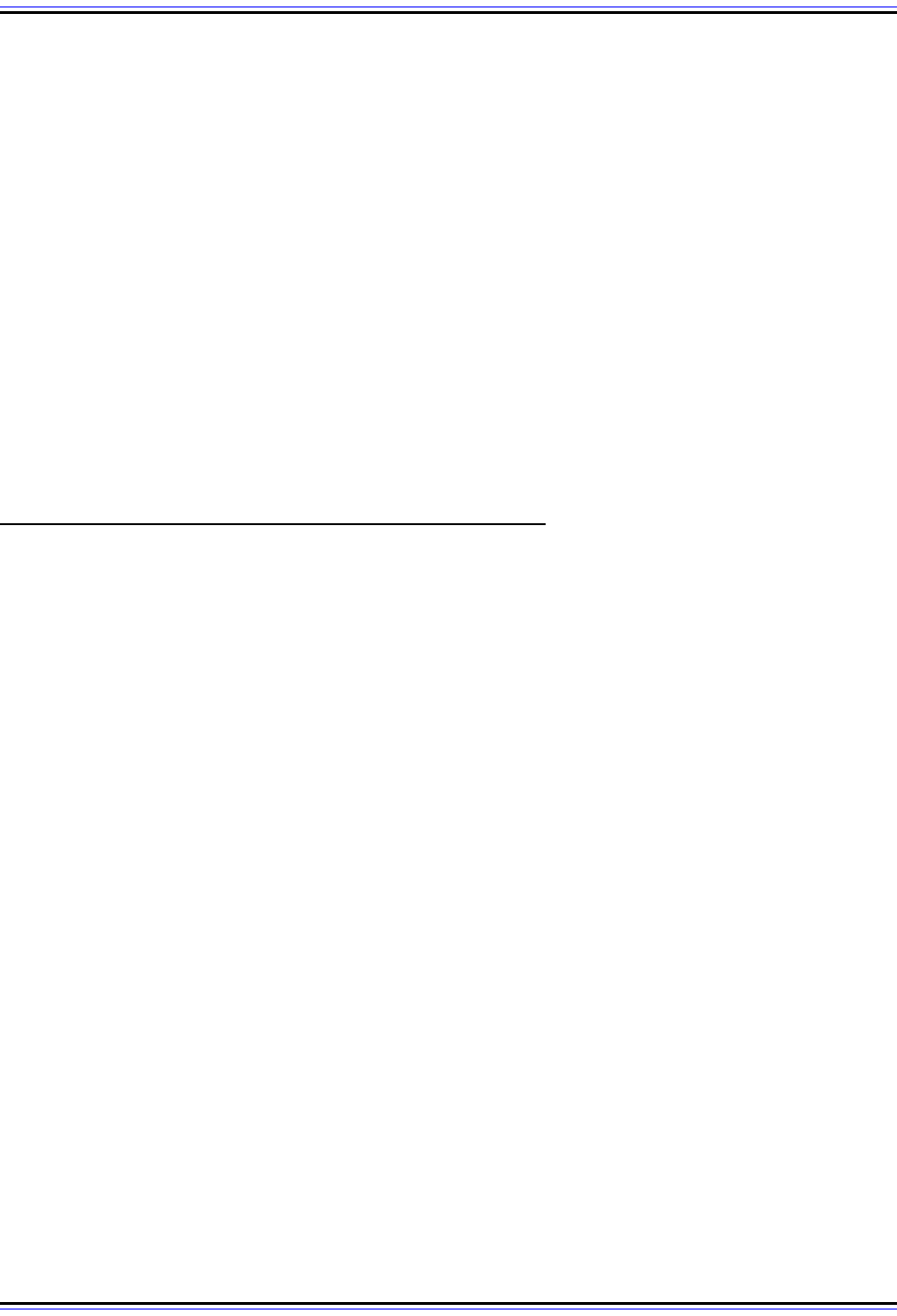
The TCP/IP Guide - Version 3.0 (Contents) ` 359 _ © 2001-2005 Charles M. Kozierok. All Rights Reserved.
Let's take a brief example to see how this works. Imagine that we start with Class B network
154.71.0.0. 16 bits are for the network ID (154.71) and 16 for the host ID. In regular
“classful” addressing there are no subnets (well, one “subnet” that is the whole network, but
never mind about that) and 65,534 hosts total. To subnet this network, we can decide to
split those 16 bits however we feel best suits the needs of our network: 1 bit for the subnet
ID and 15 for the host ID, or 2 and 14, 3 and 13, and so on. Most any combination will work,
as long as the total is 16, such as 5 and 11, which I illustrate in Figure 65. The more bits we
“steal” from the host ID for the subnet ID, the more subnets we can have—but the fewer
hosts we can have for each subnet.
Deciding how to make this choice is one of the most important design considerations in
setting up a subnetted IP network. The number of subnets is generally determined based
on the number of physical subnetworks in the overall organizational network. The number
of hosts per subnetwork must not exceed the maximum allowed for the particular subnetting
choice we make. Choosing how to divide the original host ID bits into subnet ID bits and
host ID bits is sometimes called custom subnetting and is described in more detail later in
this section.
IP Subnet Masks, Notation and Subnet Calculations
Subnetting divides an organization's network into a two-level structure of subnets and
hosts. This division is entirely internal and hidden from all other organizations on the
Internet. One of the many advantages of this is that each organization gets to make their
own choice about how to divide the “classful” host ID into subnet ID and host ID.
In a non-subnetted “classful” environment, routers use the first octet of the IP address to
determine what the class is of the address, and from this they know which bits are the
network ID and which are the host ID. When we use subnetting, these routers also need to
know how that host ID is divided into subnet ID and host ID. However, this division can be
arbitrary for each network. Furthermore, there is no way to tell how many bits belong to
each simply by looking at the IP address.
In a subnetting environment, the additional information about which bits are for the subnet
ID and which for the host ID must be communicated to devices that interpret IP addresses.
This information is given in the form of a 32-bit binary number called a subnet mask. The
term “mask” comes from the binary mathematics concept called bit masking. This is a
technique where a special pattern of ones and zeroes can be used in combination with
boolean functions such as AND and OR to select or clear certain bits in a number. I explain
bit masking in the background section on binary numbers and mathematics.
Function of the Subnet Mask
There's something about subnet masks that seems to set people's hair on end, especially if
they aren't that familiar with binary numbers. However, the idea behind them is quite
straight-forward. The mask is a 32-bit number, just as the IP address is a 32-bit number.
Each of the 32 bits in the subnet mask corresponds to the bit in the IP address in the same
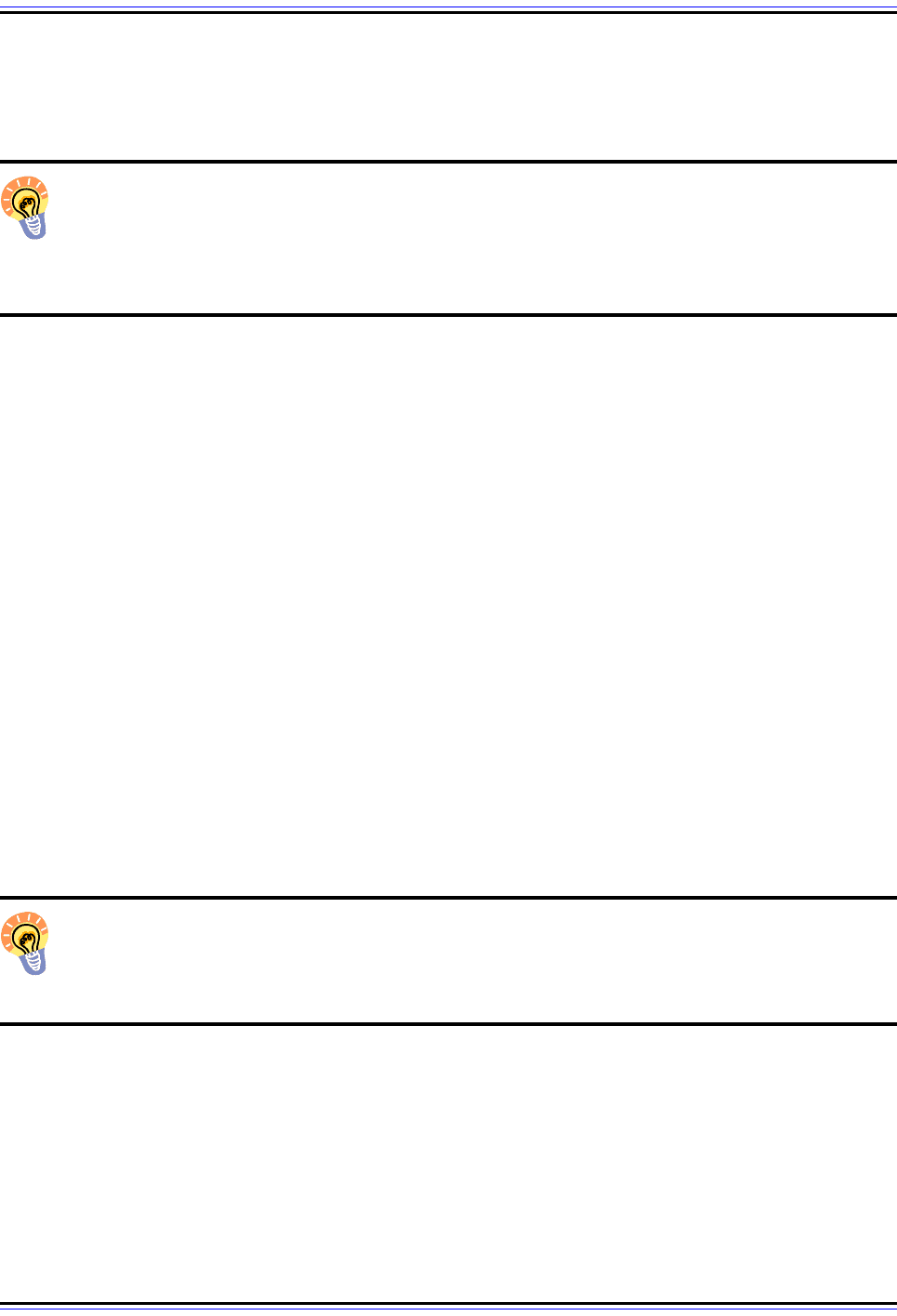
The TCP/IP Guide - Version 3.0 (Contents) ` 360 _ © 2001-2005 Charles M. Kozierok. All Rights Reserved.
location in the number. The bits of the mask in any given subnetted network are chosen so
that the bits used for either the network ID or subnet ID are ones, while the bits used for the
host ID are zeroes.
Key Concept: The subnet mask is a 32-bit binary number that accompanies an IP
address. It is created so that it has a one bit for each corresponding bit of the IP
address that is part of its network ID or subnet ID, and a zero for each bit of the IP
address’s host ID. The mask thus tells TCP/IP devices which bits in that IP address belong
to the network ID and subnet ID, and which are part of the host ID.
Why bother doing this with a 32-bit binary number? The answer is the magic of boolean
logic. We use the subnet mask by applying the boolean AND function between it and the IP
address. For each of the 32 “bit pairs” in the IP address and subnet mask we employ the
AND function, the output of which is 1 only if both bits are 1. What this means in practical
terms is the following, for each of the 32 bits:
☯ Subnet Bit Is A One: In this case, we are ANDing either a 0 or 1 in the IP address
with a 1. If the IP address bit is a 0, the result of the AND will be 0, and if it is a 1, the
AND will be 1. In other words, where the subnet bit is a 1, the IP address is preserved
unchanged.
☯ Subnet Bit Is A Zero: Here, we are ANDing with a 0, so the result is always 0
regardless of what the IP address is. Thus, when the subnet bit is a 0, the IP address
bit is always cleared to 0.
So, when we use the subnet mask on an IP address, the bits in the network ID and subnet
ID are left intact, while the host ID bits are removed. Like a mask that blocks part of your
face but lets other parts show, the subnet mask blocks some of the address bits (the host
bits) and leaves others alone (the network and subnet bits). A router that performs this
function is left with the address of the subnet. Since it knows from the class of the network
what part is the network ID, it also knows what subnet the address is on.
Key Concept: To use a subnet mask, a device performs a boolean AND operation
between each bit of the subnet mask and each corresponding bit of an IP address.
The resulting 32-bit number contains only the network ID and subnet ID of the
address, with the host ID cleared to zero.
Subnet Mask Notation
Like IP addresses, subnet masks are always used as a 32-bit binary number by computers.
And like IP addresses, using them as 32-bit binary numbers is difficult for humans.
Therefore, they are usually converted to dotted decimal notation for convenience, just like
IP addresses are.
